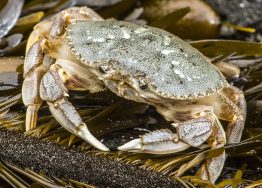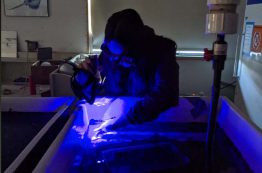Though they may be small, microorganisms are the most abundant form of life in the ocean. Marine microbes are responsible for making roughly half of the organic carbon that’s usable by life. Many marine microbes live near the surface, depending on energy from the sun for photosynthesis. Yet between the low supply of and high competition for some key nutrients, like nitrogen, in the open ocean, scientists have puzzled over the vast diversity of microbial species found there.
Read more at UW News »Bubbles of methane rising from seafloor in Puget Sound
The release of methane, a powerful greenhouse gas responsible for almost a quarter of global warming, is being studied around the world, from Arctic wetlands to livestock feedlots. A University of Washington team has discovered a source much closer to home: 349 plumes of methane gas bubbling up from the seafloor in Puget Sound, which holds more water than any other U.S.
Read more at UW News »Killer whales lingering in increasingly ice-free Arctic Ocean
Killer whales are intelligent, adaptive predators, often teaming up to take down larger whales as prey. Continuous reduction in sea ice in the Arctic Ocean is opening areas to increased killer whale dwelling and predation, potentially creating an ecological imbalance. Underwater microphones placed off the western and northern coasts of Alaska show that killer whales have spent more time than previously recorded in the Arctic, following the decrease in summer sea ice.
Read more at UW News »How Dungeness crabs’ complex lifecycle will be affected by climate change
New research on the Pacific Northwest portion of the Dungeness crab fishery, which spans the West Coast of the U.S. and Canada, projects how this crustacean will fare under climate change. Results show that by the end of this century, lower-oxygen water will pose the biggest threat. And while these crabs start as tiny, free-floating larvae, it’s the sharp-clawed adults that will be most vulnerable, specifically to lower-oxygen coastal waters in summer.
Read more at UW News »Glowing fish teeth answer questions about tooth replacement rates
One of the facts of life for humans is the replacement of baby teeth with permanent adult teeth. Whether pulled out prematurely, wiggled loose by eager hands or naturally falling out unexpectedly, this occasion marks an important milestone in the maturation process that is shared amongst all vertebrates in some form. Imagine, though, losing and replacing a tooth every single day.
Read more »





